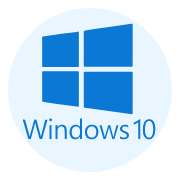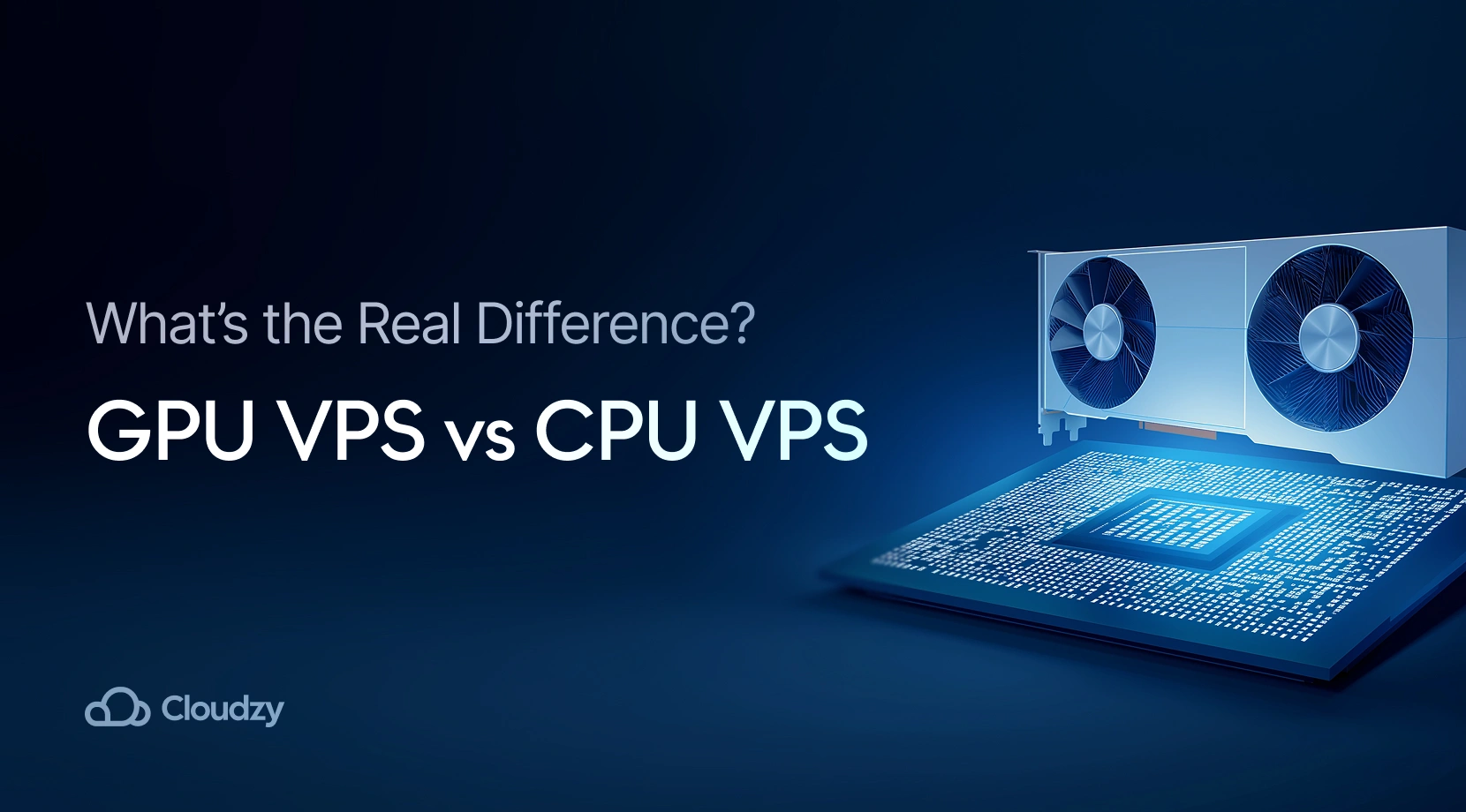We all know the creeping old feeling that suddenly gets noticeable when our Windows starts to lag. One day Windows is working fast and snappy as always, and the next day it takes forever to complete basic tasks. It’s one of the worst feelings when your computer gets laggy and slow. Most people’s solution is to completely bypass the issue by either installing a new version of Windows or completely ignoring it and buying a new PC. We seldom see people look for the root causes of why their PC has slowed down, let alone try advanced methodology to tackle the issue. But buying a new PC is not an option for everybody. So in this article, I will cover the principal issues behind Windows 10 running slow, before offering you the top 10 solutions that in my experience help speed up Windows 10.
- Can I Switch to Another Windows to Get a Better Speed?
- 5 Reasons for Your Windows 10 Being Slow
- 10 Tips to Improve Your Windows 10 Speed?
- 1. Adjust your Power Settings 🔋
- 2. Disable Startup Programs
- 3. Shut Down Tips and Tricks, as well as Cortana
- 4. Clean Your Hard Drive
- 5. Defrag Your Hard Drive
- 6. Clean Your Registry
- 7. Disable Graphics and Animations
- 8. Update Windows to the Latest Version
- 9. Disable the Game Mode 🕹️
- 10. Make Fresh Reinstall of Windows 10
- Using A Windows VPS: The Final Solution 🥇
- FAQ
Can I Switch to Another Windows to Get a Better Speed?
Before delving into the main issues of Windows 10 running slow, let’s first consider the fundamental problem: could another version of Windows be the solution? The answer largely depends on your software. To be frank, outdated hardware is usually the cause of a slow Windows 10. While there are exceptions, this is generally the case.
But why does this matter? If you have decent hardware and your Windows 10 is still slow, changing to a different version of Windows will not solve the problem. Switching Windows versions is only a viable option when using a low-end PC. In theory, each version of Windows should be more efficient than the previous, but it’s important to understand that Windows 11 is designed for an entirely different class of computer than Windows 7. Therefore, installing Windows 11 on an old PC and expecting a significant improvement is not justifiable; in fact, it may even make the situation worse.
The general rule to follow is that if you have a modern PC, upgrading from Windows 10 to Windows 11 may offer a slight improvement in speed, while if you have an older computer, switching to Windows 7 could help. However, there are also other ways to speed up your computer.
5 Reasons for Your Windows 10 Being Slow
Now if you don’t want to switch your Windows version, let’s go over the main reasons behind Windows 10 running slow. We can then use these as a pretext to answer how to speed up a Windows 10 laptop.
-
Malware and Viruses
This is one of the most common causes of a PC suddenly slowing down. The good news is that it usually comes in with other signs, so you can detect it early and solve it efficiently. If your PC has decent hardware and has been running well for a long time, and suddenly its Windows slows down, then Malware or corrupted registries are the most likely culprit. If you notice a malfunction in specific applications and Windows features, then it’s most likely a virus eating away at your PC.
-
Overloaded PC
Even the mightiest of computers will feel the weight of an overloaded PC. It doesn’t matter if you have 512MB of storage or several terabytes; when the hard drive is full your PC slows down. So always keep an eye on your storage and try not to exceed your booting drive beyond the 80% margin. The problem here is that an overloaded PC will be slow no matter what, so even if you change your Windows, it will slow down again despite the initial boost. Solid State Drives or SSDs are the closest things to a full solution.
-
Outdated Drivers
Drivers are designed to adapt to the different hardware parts you have on your PC to your Windows device. When drivers get out of date, they lose considerable amounts of efficiency in performance. Even devices you have attached to your PC and are not part of the computer use their own drivers. While these drivers are not as crucial as system drivers such as your display, they may still slow down your PC. So ensure that your drivers are always updated, especially key drivers like your internet connected device, audio, and display. Keeping up with driver updates is one of the key ways to make Windows 10 faster.
-
Outdated Hardware
Earlier I mentioned that this is by far the biggest reason for slowing down computers, and it’s not even close. The performance demand for computers has increased over time, and some of these increases are not that obvious. For example, let’s say you installed Windows 10 at its launch in 2015. The number of updates and patches has since altered the demand for hardware to run Windows 10 effectively. The most efficient way to tackle this issue is to recognize the slowest components of your computer and replace them. Sadly this is not as easy for laptops, still a reliable thing to keep in mind in order to speed up your computer!
-
Corrupted System Files
System files are files that Windows 10 uses to perform. Naturally, these files are of paramount importance, and if they are altered in any way, they will slow down your computer significantly. Detecting why they are corrupted is rather complicated. The user may unknowingly mess them up. Viruses and malware are also likely culprits here. In more severe cases, the computer won’t just slow down, it will sometimes suffer black or blue screen errors outright and force a reboot. A fresh reinstall of Windows usually solves this.

10 Tips to Improve Your Windows 10 Speed?
Now let’s finally go over the top 10 tips to speed up Windows 10. Some of these tips are directly linked to the issues I just mentioned, and some are more general. But these 10 tips will speed up Windows 10 in their own right. Let’s get to them and get to know how to speed up a Windows 10 laptop.
1. Adjust your Power Settings 🔋
A low power supply for our hardware is a real silent killer. It may slow down your computer for months and, you may check for every other faulty component before realizing that your PC has been starving for efficient power flow all this time. Luckily the fix to this is relatively simple, Just bring up the Control Panel, go to Hardware and Sound, and to Power Options. Here are three options: Power Saver, High Performance, and Balanced. You may see Power Saver enabled even for desktops that do not have a battery. Go for either Balanced or High Performance instead to speed up Windows 10.
2. Disable Startup Programs
This solution will instantly make a noticeable difference in your Windows 10’s booting time. Whenever you install new software, chances are that it marks itself as startup-enabled. So every time you boot up your Windows 10, a bunch of programs will potentially start to load simultaneously. Not hard to see why it takes ages for such a PC to load. To remedy this, press Ctrl + Alt + Delete. From the menu choose the task manager and then navigate to the startup tab. Here you will see all the programs that have startup enabled for them. Simply right-click on them and disable the option to speed up Windows 10 even more.
3. Shut Down Tips and Tricks, as well as Cortana
Windows’s attempt at an audio assistant has failed and nobody uses Cortana. And do you really need tips and tricks on using Windows 10 in 2023? I don’t think so. Now consider that both of these features take up your precious computing resources and it’s easy to conclude that it’s high time we get rid of them to speed up Windows 10. SO in order to speed up your computer, Launch the Settings app, and from there head to Notifications and Actions. Uncheck the tick that reads ‘Get notifications from the app and other senders’. Disabling Cortana might not be a good option since Microsoft doesn’t want you to do it. Use this guide to get rid of Cortana and, you should feel a noticeable boost in your Windows 10’s performance!
4. Clean Your Hard Drive
This is as straightforward as it will get in how to make Windows 10 faster. Remember I told you that an overloaded PC would slow down no matter what? Well, it is time to tackle the issue and get rid of the junk in your PC, especially the ones in your boot drive. Almost all downloads are by default stored in your boot drive which can add up over time. Furthermore, the temp folder in your boot drive can be home to a considerable amount of cached data you don’t need. Clear the temp folder, and delete everything else you are not using. This will immediately speed up your PC.
5. Defrag Your Hard Drive
Fragmentation of your hard drive is another silent killer that over time gets to play a significant role in slowing down your computer. Essentially your Hard Drive starts to store data in scattered fragments. Then when you need to run a program that is scattered across your disk’s fragments, the computer will have to take extra time to rebuild the related files. Now if you have an SSD this is not an issue and you can skip this step. Otherwise, search “defrag” in your Windows search bar. Select “defragment and optimize drives”. Perform one defragmentation operation on every drive you have. Then set it to automatically repeat the process either weekly or monthly.
6. Clean Your Registry
The registry is where nearly every aspect of how your Windows runs, operates, and looks are stored. So if in any way its integrity is compromised and it is corrupted, you can expect all sorts of issues, including slowing down of your computer. A user may unknowingly mess the registry up, or have it altered or corrupted by allowing virus infections. Unfortunately handling the registry is about as complicated as it gets with a desktop computer. So you are better off using a Registry cleaner to do it for you or performing a fresh reinstall of your Windows. Here’s a list of the best registry cleaners of 2023 to help you through the process.
7. Disable Graphics and Animations
When you first installed your Windows 10 after years of using Windows 7 or 8, you were probably happy to see all the fresh colors, graphics, and animations. Here’s the catch: they directly lead to Windows 10 running slow. So what should you do? Disabling them is the most straightforward solution. Bring up the search bar and search for “sysdm.cpl”. When the System Properties comes up, go to the advanced tab. From here, in the performance section, click on settings. Here you will see an elaborate list of all animations that affect your performance, disable them until you get a desirable performance, and speed up Windows 10 easily. From here, go to the Settings app again. Click on personalization, and turn off the transparency option for good measure.
8. Update Windows to the Latest Version
With each consecutive update, Windows 10 introduces new security measures designed to keep the latest online hacking methods at bay and make Windows 10 faster. But that’s not all, these updates also have a ton of optimization options in them that help your computer’s hardware and OS software run more efficiently as part of a unified system. Therefore you are killing two birds with one stone when you update your Windows 10 to the latest version. Updating your OS takes a few minutes and is one of the easiest and fastest ways to speed up Windows 10.
9. Disable the Game Mode 🕹️
If you are a gamer, chances are you are familiar with Windows 10’s game mode which is designed to prioritize graphically demanding tasks and processing over other background and secondary operations. While the Game mode is On, your PC performs better at these tasks. But suppose you leave it On during non-gameplay hours, in that case it mistakenly continues to deprioritize the tasks above, which in turn will lead to these processes taking longer than average. In the Windows search bar, look for “Game Mode Settings”. Click on the prompt and turn it off to speed up Windows 10 more. This is one of the main ways to make Windows 10 faster.
10. Make Fresh Reinstall of Windows 10
This is more of a last resort than anything else. I have mentioned going for a fresh reinstall several times in this article and for good reason. If you try everything and it still seems to not work as intended, then a fresh reinstall will clean your hard drive, clean your registry, get rid of viruses, and unload all startups and other unnecessary installations that burden your PC. Windows 10 running slow is a common issue, and if nothing else works, and your hardware is healthy, then a fresh reinstall should make Windows 10 faster.
Using A Windows VPS: The Final Solution 🥇
Some people may not have access to a Windows license for a fresh reinstall, and upgrading faulty hardware can often be expensive. So if that’s the case for you, or if you are a non-Windows user who now needs a Windows computer for work or other tasks, an affordable solution would be buying a Windows VPS server. Here are the top 10 use cases of a Windows VPS!
Get yourself an efficient Windows 10 VPS for remote desktop, at the cheapest price out there. FREE Windows 10 running on NVMe SSD storage and high-speed internet. Windows 10 VPS Hosting
Windows 10 VPS Hosting
A Cloudzy Windows VPS will allow you to gain access to a remotely accessed Windows server with dedicated, high-quality resources that are guaranteed to provide you with a healthy Windows performance for a very cheap monthly subscription, starting at $7.95. There are more than 15 locations to choose from, and you get access to diverse payment methods, accommodative billing, and a caring 24/7 support team.
FAQ
Why is Windows Server Slow?
There are tons of reasons leading to Windows 10 running slow. You can have malware in your computer, or your drivers may be outdated. You can also have a dated set of hardware, corrupted file systems, a faulty power supply, and an overloaded Hard drive, all of which can be at fault for a slow Windows 10 server.
Does RAM Affect Server Speed?
RAM, being one of the key components of your hardware, is a crucial piece that determines the speed of your system. If your issue is related to hardware and you desire to make Windows 10 faster and to improve your computer’s performance, enhancing your RAM should be of utmost priority.
Why is my Windows VPS Slow?
Now, if a remote Windows server is slow, the causes may extend beyond what is discussed in this post. In addition to the reasons above, a VPS’s speed is directly dictated by your latency and internet connection as well, since all your commands are transmitted and executed through the connection.




